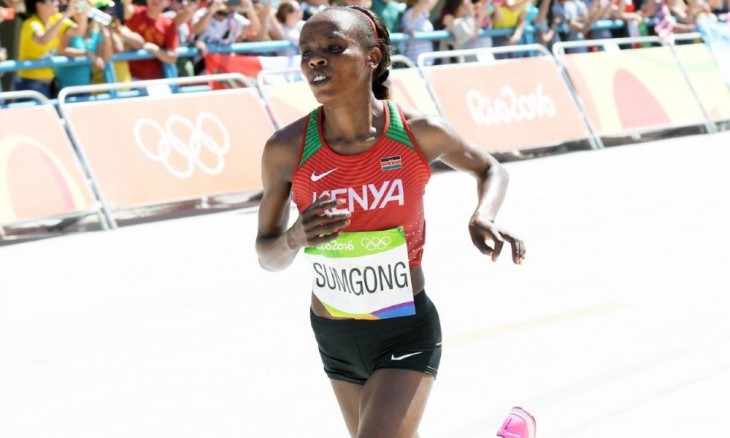Doping
02.05.2022
Is athletics winning the fight against doping?

-
Members of the discussion:
-
Last reply:
“We are in a good place and our trajectories are going in the right way for the first time in a long time,” declares Brett Clothier, the head of the Athletics Integrity Unit. The Australian, recruited last summer to front World Athletics’ independent spin-off, acknowledges there’s a but. “I don’t want to kid anyone,” he adds. “There’s still a long way to go in the fight against doping.”
The scale of that battle in the UK alone appears vast on mere tests conducted. According to the most recent report from UK Anti-Doping, samples were collected on 12,971 occasions within a year from across 49 sports and in 36 countries in the year headed into the originally-scheduled Tokyo Olympics and Paralympics.
Throw in a supplementary process of investigation, intelligence and regulation to bring 25 published decisions – at a bill of £3million per annum. It feeds into the AIU, established in 2017 and designed to operate freely of the vested interests and corruption that has a tendency to infiltrate sports, as the old IAAF and Russia (still suspended) have demonstrated.
It has proven effective in policing track and field as a counter-weight to any flaws in each nation’s own system. Straightforward was the case of Christian Coleman, suspended until later this year following his three missed drugs tests. More esoteric was Wilson Kipsang, who deployed a fake photo of an overturned lorry to justify missing a test. Or fellow marathoner Jemima Sumgong’s insistence she was injected with EPO by a malevolent imposter.
A total of 544 names began the year on the AIU’s global blacklist – although the lone Briton, hammer thrower Mark Dry, has since been removed from it. A rare example, perhaps, where a system sensibly set up to judge in black and white struggles with the occasional shade of grey.
“I hope,” adds Clothier, “that people – the athletics fans and the broader public – can really see athletics is standing out in the crowd from other sports in actually taking the issue of doping seriously. And that, with the right structures in place and the right amount of investment, it’s possible to make an impression, to begin to take the first serious steps to actually getting a better situation that the public can trust in our events, can trust in what they’re seeing out on the field of play.”
Fairly, and without discrimination, declares Sebastian Coe, the president of World Athletics. Despite Dry’s claims that he was easy prey for an unfair sanction as “low hanging fruit”, there is no doubt that other sports have a more recent history of protecting their wayward stars, or simply not testing thoroughly at all.
“If there is transgression – and there is a far greater chance because of the technology and investigative skills that the AIU has now and how it collates its intelligence – there is a far greater chance they will get to the bottom of these things quicker than we have before,” Coe said. “And the sanction will be faster and harder. And plenty of people with high reputations have taken a tumble.”
The Tokyo Olympics, notably, saw British sprinter CJ Ujah test positive for a prohibited substance normally utilised for muscle-building. It means the GB team will lose its silver medal at the 2020 Olympics too.
Such detection is simpler in a controlled environment such as a Games where there is no hiding place and all must pass through the inspection zone.
But, says Clothier: “In high risk environments, the quality of the cases we’ve been able to have is high … and I’ll give you just two examples: one is Kenya and one is Russia.”
Notoriously lax in their respective regimes, the net has closed – whether around the natives or those on a visit. Much change on the latter came out of the McLaren Report that saw the Russian ecosystem exposed as a sham.
Kenya remains imperfect in its diligence but the government has been lent on and brought on board. “In terms of the education work that’s happening on the ground there, steps are being put in to address risk,” confirms Clothier.
“And also, quite frankly, the athletes are more afraid of getting caught than they were before. And that has a really big impact on the ground.”
The UK is not without stains. Supplement use – and abuse – remains a significant problem at a recreational level, with one study suggesting that steroid users are larger users of needle exchanges in Wales than the drugs addicts they were set up to serve.
“The key threats for people at the elite level and the sub-elite level are around supplement contamination and we’ll keep raising those risks until we’re blue in the face,” says Charlie Bosomworth of UK Anti-Doping.
Significantly, few of those who fall foul of the testers are found to do so inadvertently, hence why 45 per cent of UKAD’s prosecutions come from tips. People talk. They know. Yet the gambles continue for so many reasons.
Bosomworth adds: “All of these pressure points that can impact an athlete’s decision, and then moral guidance, in terms of taking that taking that step into wilfully cheating, versus those athletes that make silly mistakes and don’t take the proper steps to protect themselves.”
The education process will continue to try and narrow that funnel. The AIU will push more resources there, now that its processes have been upskilled to a high level of sophistication. Different horses for different courses, Clothier promises, depending on the part of the world and the culture involved.
“And it’s really about the behaviours we need the elite athletes to support,” he says. “Some athletes are going to dope at the international level because they want to. But other athletes can still help the anti-doping by reporting concerns, by showing a good example, by doing things like Whereabouts properly.
“So our education programmes are really focused. On the behaviours that the athletic community needs to see from athletes and support persons to make a stronger anti-doping environment.”
The scale of that battle in the UK alone appears vast on mere tests conducted. According to the most recent report from UK Anti-Doping, samples were collected on 12,971 occasions within a year from across 49 sports and in 36 countries in the year headed into the originally-scheduled Tokyo Olympics and Paralympics.
Throw in a supplementary process of investigation, intelligence and regulation to bring 25 published decisions – at a bill of £3million per annum. It feeds into the AIU, established in 2017 and designed to operate freely of the vested interests and corruption that has a tendency to infiltrate sports, as the old IAAF and Russia (still suspended) have demonstrated.
It has proven effective in policing track and field as a counter-weight to any flaws in each nation’s own system. Straightforward was the case of Christian Coleman, suspended until later this year following his three missed drugs tests. More esoteric was Wilson Kipsang, who deployed a fake photo of an overturned lorry to justify missing a test. Or fellow marathoner Jemima Sumgong’s insistence she was injected with EPO by a malevolent imposter.
A total of 544 names began the year on the AIU’s global blacklist – although the lone Briton, hammer thrower Mark Dry, has since been removed from it. A rare example, perhaps, where a system sensibly set up to judge in black and white struggles with the occasional shade of grey.
“I hope,” adds Clothier, “that people – the athletics fans and the broader public – can really see athletics is standing out in the crowd from other sports in actually taking the issue of doping seriously. And that, with the right structures in place and the right amount of investment, it’s possible to make an impression, to begin to take the first serious steps to actually getting a better situation that the public can trust in our events, can trust in what they’re seeing out on the field of play.”
Fairly, and without discrimination, declares Sebastian Coe, the president of World Athletics. Despite Dry’s claims that he was easy prey for an unfair sanction as “low hanging fruit”, there is no doubt that other sports have a more recent history of protecting their wayward stars, or simply not testing thoroughly at all.
“If there is transgression – and there is a far greater chance because of the technology and investigative skills that the AIU has now and how it collates its intelligence – there is a far greater chance they will get to the bottom of these things quicker than we have before,” Coe said. “And the sanction will be faster and harder. And plenty of people with high reputations have taken a tumble.”
The Tokyo Olympics, notably, saw British sprinter CJ Ujah test positive for a prohibited substance normally utilised for muscle-building. It means the GB team will lose its silver medal at the 2020 Olympics too.
Such detection is simpler in a controlled environment such as a Games where there is no hiding place and all must pass through the inspection zone.
But, says Clothier: “In high risk environments, the quality of the cases we’ve been able to have is high … and I’ll give you just two examples: one is Kenya and one is Russia.”
Notoriously lax in their respective regimes, the net has closed – whether around the natives or those on a visit. Much change on the latter came out of the McLaren Report that saw the Russian ecosystem exposed as a sham.
Kenya remains imperfect in its diligence but the government has been lent on and brought on board. “In terms of the education work that’s happening on the ground there, steps are being put in to address risk,” confirms Clothier.
“And also, quite frankly, the athletes are more afraid of getting caught than they were before. And that has a really big impact on the ground.”
The UK is not without stains. Supplement use – and abuse – remains a significant problem at a recreational level, with one study suggesting that steroid users are larger users of needle exchanges in Wales than the drugs addicts they were set up to serve.
“The key threats for people at the elite level and the sub-elite level are around supplement contamination and we’ll keep raising those risks until we’re blue in the face,” says Charlie Bosomworth of UK Anti-Doping.
Significantly, few of those who fall foul of the testers are found to do so inadvertently, hence why 45 per cent of UKAD’s prosecutions come from tips. People talk. They know. Yet the gambles continue for so many reasons.
Bosomworth adds: “All of these pressure points that can impact an athlete’s decision, and then moral guidance, in terms of taking that taking that step into wilfully cheating, versus those athletes that make silly mistakes and don’t take the proper steps to protect themselves.”
The education process will continue to try and narrow that funnel. The AIU will push more resources there, now that its processes have been upskilled to a high level of sophistication. Different horses for different courses, Clothier promises, depending on the part of the world and the culture involved.
“And it’s really about the behaviours we need the elite athletes to support,” he says. “Some athletes are going to dope at the international level because they want to. But other athletes can still help the anti-doping by reporting concerns, by showing a good example, by doing things like Whereabouts properly.
“So our education programmes are really focused. On the behaviours that the athletic community needs to see from athletes and support persons to make a stronger anti-doping environment.”
Discussion
More on the topic



